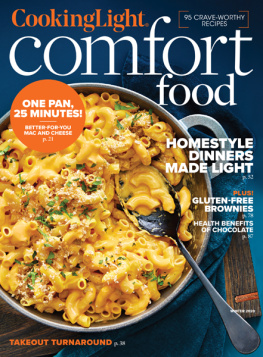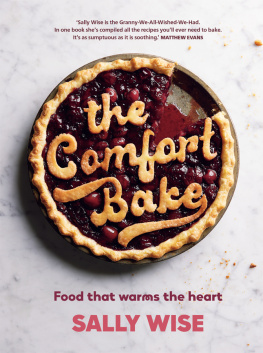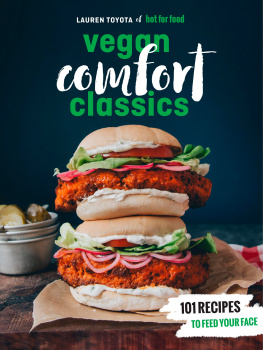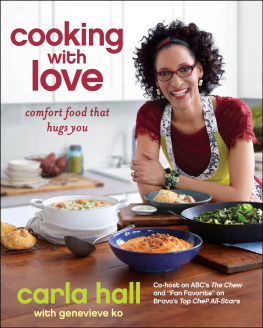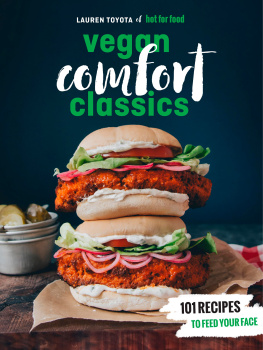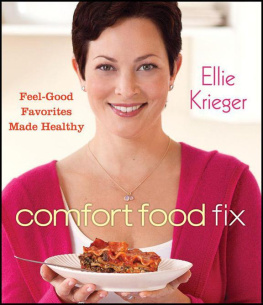
Also by Marian Burros
The New Elegant but Easy Cookbook (with Lois Levine)
20-Minute Menus
Eating Well Is the Best Revenge
Keep It Simple: 30-Minute Meals from Scratch
The Best of De Gustibus
Pure and Simple
Youve Got lt Made
The Elegant but Easy Cookbook (with Lois Levine)
Second Helpings (with Lois Levine)
Freeze with Ease (with Lois Levine)
The Summertime Cookbook (with Lois Levine)
Come for Cocktails, Stay for Supper (with Lois Levine)
Marian Burros may be contacted at her e-mail address: marbur@nytimes.com
SIMON & SCHUSTER New York London Toronto Sydney Singapore
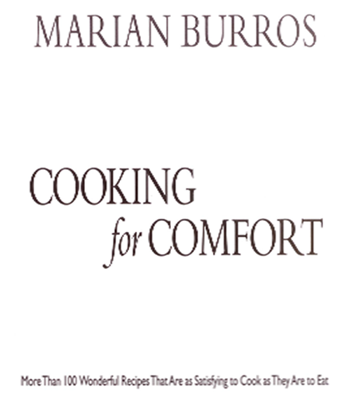

SIMON & SCHUSTER
Rockefeller Center
1230 Avenue of the Americas
New York, NY 10020
www.SimonandSchuster.com
Copyright 2003 by Foxcraft, Ltd.
All rights reserved, including the right of reproduction in whole or in part in any form.
SIMON & SCHUSTER and colophon are registered trademarks of Simon & Schuster, Inc.
For information regarding special discounts for bulk purchases, please contact Simon & Schuster Special Sales at: 1-800-456-6798 or business@simonandschuster.com
Designed by Bonni Leon-Berman
Manufactured in the United States of America
10 9 8 7 6 5 4 3
Library of Congress Cataloging-in-Publication Data is available
ISBN 0-7432-3681-5
ISBN-13: 978-0-7432-3681-2
eISBN-13: 978-1-439-10396-8
ACKNOWLEDGMENTS
In the middle of testing the lemon meringue pie recipe for this book, I had an epiphany. It dawned on me that, once again, I was working with one of my mothers recipes. Thirty years after my mother died, I had finally realized what an enormous culinary influence she had on me.
I had never stopped to think about it. When I finally had a kitchen of my own, I couldnt wait to experiment with dishes that were different from my mothersdespite the fact that my mother was a very good cook.
Of course, I called her when I wanted to know how to roast a chicken (Ah! First you have to take the package of chicken parts out of the chickens cavity) or make a pot roast (I see: The reason the meat burned on the bottom was because I used a thin aluminum pot), but I also wanted to make Southern fried chicken and lobster fra diavolo, strawberries Romanoff, and pumpkin chiffon pie.
Even before Julia Child arrived on the scene, I was taking classes with Dione Lucas, a Cordon Bleu-trained Englishwoman. She may have been the first television chef, and from her I learned how to bone a chicken and turn it inside out, a skill I have never used since. I also learned how to make her chocolate roll (youll find it on page 172).
Of course, after Julia I completely Frenchified my kitchen with copper pots and imported knives and dishes for souffls and gratins, and molds for crme caramel and mousse au chocolat. But I still use some of the tools my mother passed on to me and have been eternally sorry I did not keep her potato masher.
It wasnt until I went to work on this book and back to the dishes I have loved best that it came to me: I am my mothers daughter, even in the kitchen. This love of cooking has been passed on to both of my children; it always makes me smile when my daughter, Ann, calls and asks for advice on making a dish. She is an instinctive cook and probably never reads recipes.
My son, Michael, the lawyer, cooks in his restaurant kitchen in Spain. He is the owner and chef of O Cabalio do Demo, in Santiago de Compostela, in Galicia, the northwest corner of Spain, where he has far surpassed my cooking skills. (Honestly, its not a mothers pride talking; my sons food at his vegetarian restaurant is superb.)
Along with the recipes that credit my motherthe meat sauce and the brisket, the chicken soup and the mushroom and barley soup, the coffee cake and the lemon meringue pieyou will note a number that come from Michaelchocolate and butterscotch puddings, mocha brownies, and eggplant lasagna, among others. Influence goes both ways.
There are many other people I am eager to thank, most especially Susan Simon, whose professional name is SueChef. As in the past, she not only tested recipes for me that I wanted a second set of taste buds to try, but she contributed a few of her own. And I also thank my son, Michael, for providing some of the best recipes in the book and for testing a few others.
Thanks to Roy Coleman, my significant other, for sampling the experiments, good and bad, and for making the wine suggestions.
To Sam Sifton, editor of the Dining In, Dining Out section of The New York Times, I am particularly grateful for his deft and graceful editing of the Introduction to the book.
I am indebted to Harold McGee, the author of On Food and Cooking (Simon & Schuster, 1997) and scientist extraordinaire, who graciously answered all my chemistry questions.
To Elsa Castro, who has made my life easier in the kitchen for more than twenty years, special thanks.
My agent, Amanda Urban, and my book editor, Sydny Miner, have always been there as sounding boards and to lean on.
But my most special thanks go to my mother, who taught me the importance of family meals and cooking with loveeven if it took me decades to realize my debt to her.
Marian Fox Burros
Northeast Kingdom, Vermont
November 2002
To my mother, Dorothy, who taught me how to cook
And to my children, Michael and Ann, who carry on in her tradition in the kitchen 
CONTENTS
COOKING for COMFORT
INTRODUCTION
Roughly three years ago, for reasons that now seem as unfathomable and obvious as a shift in the weather, I began to long for the simple, straightforward food of my childhood. After spending close to two decades putting together recipes for quick-cooking dinners appropriate to a fast-paced urban lifestylefood that could be put on a table 20 minutes after coming home from workI just wanted to take the kind of time my mother could afford to put a meal on the table. I wanted the food my mother made for me.
This return to simple pleasures has been under way in Americas restaurant kitchens for a couple of years. It is part of an evolutionary process. Now that American chefs know they can cook as well as anyone in the world, they dont have to prove it anymore. As consumers, weve gone from coveting food from abroad to coveting food from the local farmer. Today, in the culinary world, the phrase locally grown has as high a standing on menus as fancy ingredients like foie gras and truffles. We want artisanal food, not corporate ingredients. We want meat that is organic and grass-fed, not stockyard-raised or bioengineered.
In fact, in some ways we have come to a point where the quality of the ingredients is more important than any fussing done with them. These two directionson the one hand a desire to return to the satisfying, family-based meals of Americas past; and on the other hand the desire to eat healthy, family-farm-based ingredientshave led to the reappearance of what has commonly come to be called comfort food. We are embracing dishes particular to America, reinterpreting them in some instances, leaving them as they stand in others. This process is part of a natural cycle, too. Many of us have become bored with the refinements that some chefs had been visiting on their dishes, just to one-up their colleagues, it seemed. Eating out at some restaurants required too much work.
Next page


